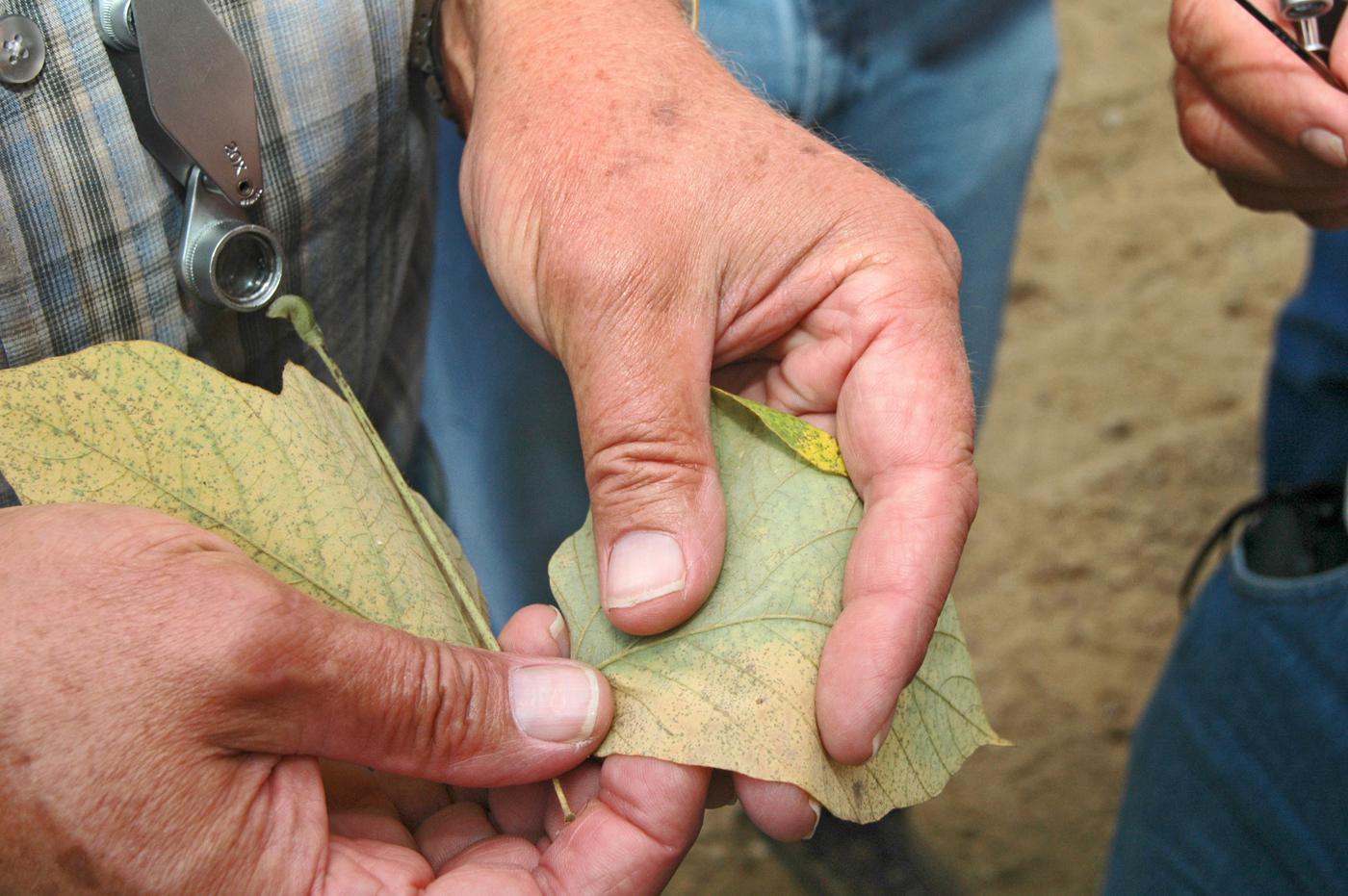Information Possibly Outdated
The information presented on this page was originally released on May 1, 2008. It may not be outdated, but please search our site for more current information. If you plan to quote or reference this information in a publication, please check with the Extension specialist or author before proceeding.
Soybean rust battle takes look at kudzu
MISSISSIPPI STATE -- Ongoing efforts to track Asian soybean rust and minimize its threat to Mississippi soybean acres led researchers to note that some kudzu, a rust host, resists the disease.
Billy Moore, plant pathologist emeritus working part time with the rust program for the Mississippi State University Extension Service, said the team searching for rust in the state examines soybeans and kudzu plots for signs of the fungus. They use global positioning system coordinates to note the location of each plot searched for rust.
“Some of the first Asian soybean rust found in the state in 2007 was found in patches of kudzu,” Moore said.
The first soybean rust found in each of the past four years on soybeans was in the sentinel plots the Extension Service plants each year scattered along the state lines to monitor for the first appearance of rust.
“We plant these early so the soybeans reach the most susceptible stage before the ones in commercial production reach that stage,” Moore said.
The team searching for rust uses the information collected to determine if a soybean rust alert is necessary, and if an alert is provided, in what areas of the state should producers be concerned. Recommendations also are provided to producers within counties of concern on action they should take to protect their crop.
The Mississippi team annually assists researchers at Fort Dietrick, a U.S. Department of Agriculture containment facility in Maryland originally used for biological warfare research during World War II. It is now used to establish research on crop pests, including soybean rust. The facility provides all soybean-growing states with needed information on preventing losses. Research there on soybean rust has been ongoing since 1972.
“We have been working with these researchers to collect kudzu seeds over the last three years and track them with GPS coordinates,” Moore said. “We sent 68 samples last year. They have found that kudzu varies in its susceptibility to rust.”
Moore said the research indicates kudzu may be very susceptible, moderately susceptible or resistant to soybean rust. Originally, all kudzu was thought to be susceptible to the fungus.
“Knowledge of how much kudzu is susceptible in the state provides information on how important kudzu is in the development and spread of soybean rust,” Moore said.
Kudzu patches that are known to be susceptible can be scouted for the presence of soybean rust.
“Current technology may someday enable scientists to place these genes for resistance to soybean rust into soybeans. However, in the near future, we will have resistance obtained from soybean lines from Asia,” Moore said. “USDA is working quickly to get resistance to the soybean farmers, and private seed companies are doing the same. Schillinger Seeds plans to have resistance available by 2011.”
Another interesting discovery is that soybean rust is adversely affected and the disease does not spread after a few days of optimum night temperatures and high day temperatures. Researchers at Fort Dietrick found that this off-on cycle over time shuts the disease cycle down.
“This information helps researchers make recommendations to producers on when to and when not to apply a fungicide,” Moore said.
Tom Allen, Extension plant pathologist at MSU's Delta Research and Extension Center in Stoneville, said one application of fungicide for rust control costs about $10-$16 per acre.
“With soybean prices at record highs, producers are more willing to spend money on fungicide applications, but if they aren't necessary because the rust is not spreading, we want to encourage our growers to wait and see if they can save that money,” Allen said.
He said the warm, wet winter was favorable to rust, and it was found active in Alabama and Louisiana in early March.
The Mississippi Soybean Promotion Board and BASF provide a toll-free number during the soybean-growing season that gives regular updates on Asian soybean rust. Producers are encouraged to use this resource to learn the latest information and management recommendations from the MSU Extension Service. Call (866) 641-1847 to hear state-specific updates for Mississippi, Louisiana and Arkansas.







